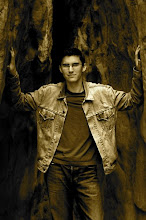As the film develops, Betty and Rita fall in love. However, their developing romance and the mystery of Rita’s identity suddenly disappears and Betty becomes Dianne Selwyn, a failing actress who has been jilted by her lover Camilla Rhodes, a big movie star now engaged to Adam, a successful director. Furious at being rejected, Dianne hires a hitman to kill Camilla. However, once the deed is done, she is haunted visions of a maniacal elderly couple (most likely projections of her own guilt) who drive her to suicide.
I read several reviews of the film, and I tended to agree with the ones that argued that though the film is complex, it does tell a unified and comprehensible narrative. To me, the Betty-Rita scenario is a fantasy. It’s Dianne’s vision of a happier life, a life built on images of Hollywood glamour and mystery. She casts herself as Betty, the idealistic young actress on the verge of stardom and Camilla as Rita, a damsel-in-distress she can heroically rescue. In this re-imagining, her experiences promise to achieve glamour, mystery, excitement, and above all, a happy ending.
So, despite its unconventional storytelling and bizarre moments, Mulholland Drive is a fairly straightforward film about the illusory nature of life and movies. It reminded me of Billy Wilder’s classic Sunset Boulevard, another “poisonous little valentine to Hollywood.” Like Wilder, Lynch concerns himself with the “putrefaction” of human beings living under the mythic burden of Hollywood. In Mulholland Drive, he establishes this underlying tension that seems to reference some darkness or perversity. This force is never allowed to fully manifest itself in the film. It never becomes, in other words, a horror movie. The force is simply there, capable of being glimpsed at times in the most bizarre moments of the film. As a result, Mulholland Drive reads like a sublimated Gothic fantasy, one in which Freudian drives lurk beneath a pastiche of 1940s Hollywood glamour and 1950s modernism.
The result is hyperreal, to say the least.


Laura Harring's amnesiac character takes the alias "Rita" after glimpsing a movie poster of actress Rita Hayworth in Gilda (1946). Many critics believe that Gilda is a film about a woman who comes between the homosexual relationship between two men. This is analogous to Dianne's relationship with Camilla which is "violated" by Adam in Mulholland Drive.
Conclusion: I give Mulholland Drive three out of four stars. Content-wise, I would certainly not recommend this movie. But from a cinematic or philosophical perspective, it's a fascinating commentary on loneliness and despair in a Hollywood culture.


No comments:
Post a Comment